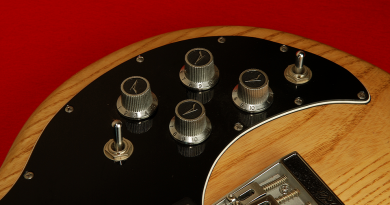Master the Basics: A Complete Beginner’s Guide to Playing Guitar
Master the Basics: A Complete Beginner’s Guide to Playing Guitar
Learning to play the guitar can be a rewarding and fulfilling experience. Whether you dream of playing in a band, writing your own songs, or just strumming along to your favorite tunes, mastering the basics is essential to becoming a skilled guitarist. In this beginner’s guide, we will cover everything you need to know to kickstart your guitar journey.
Choosing the Right Guitar
The first step in learning to play guitar is choosing the right instrument. There are many different types of guitars available, including acoustic, electric, and classical guitars.
Acoustic guitars are a popular choice for beginners because they are versatile and easy to carry around. They produce a warm, natural sound and are well-suited for various genres of music. Electric guitars, on the other hand, require amplification to produce sound and are typically used in rock and pop music. Classical guitars have nylon strings and are commonly used in classical and flamenco music.
When selecting a guitar, consider factors such as your budget, playing style, and body size. It’s crucial to choose a guitar that feels comfortable to hold and play, as this will make the learning process much more enjoyable.
Tuning Your Guitar
Before you start playing, it’s essential to tune your guitar. Tuning ensures that your guitar produces accurate and harmonious sounds. The standard tuning for a guitar is EADGBE, with the thickest string (the low E string) tuned to E and the thinnest string (the high E string) tuned to E. You can use a tuner or a tuning app to help you tune your guitar accurately.
Learning the Basic Chords
Chords are essential building blocks in guitar playing. They are formed by playing multiple notes simultaneously and are used to create harmonious melodies and accompaniments. Some of the basic chords every beginner should learn include:
– C Major: Place your third finger on the third fret of the fifth string, second finger on the second fret of the fourth string, and first finger on the first fret of the second string. Strum from the fifth string down.
– G Major: Place your second finger on the third fret of the sixth string, first finger on the second fret of the fifth string, and third finger on the third fret of the first string. Strum from the sixth string down.
– D Major: Place your first finger on the second fret of the third string, third finger on the third fret of the second string, and second finger on the second fret of the first string. Strum from the fourth string down.
Practicing these chords regularly will help you develop muscle memory and finger strength, making it easier for you to switch between chords smoothly.
Mastering Strumming Patterns
Strumming is another essential skill for guitarists. Strumming patterns refer to the rhythmic patterns in which you strum the strings with your pick or fingers. Different songs require different strumming patterns, so it’s essential to practice a variety of patterns to improve your technique.
One of the most common strumming patterns for beginners is the down-up strumming pattern. Start by strumming down with your pick or fingers and then strum up in quick succession. Practice this pattern slowly at first, gradually increasing your speed as you become more comfortable.
Learning to Read Guitar Tabs
Guitar tabs are a form of musical notation specifically designed for guitarists. Tabs consist of six lines representing the six strings of the guitar, with numbers indicating which fret to press down. By learning to read tabs, you can quickly learn how to play your favorite songs without having to read traditional sheet music.
When reading tabs, the numbers represent the frets you should press down, while the lines indicate the strings to play. For example, a “1” on the second line means you should press down the first fret on the second string. Practice reading tabs regularly to improve your guitar playing skills.
Building a Practice Routine
Consistency is key when learning to play the guitar. Set aside dedicated time each day to practice your chords, strumming patterns, and songs. A good practice routine should include warm-up exercises, chord practice, scale practice, and learning new songs.
Start with a warm-up exercise such as finger exercises or scales to loosen up your fingers and improve your dexterity. Next, practice your chords and strumming patterns to build muscle memory and finger strength. Finally, work on learning new songs or improvising to enhance your creativity and musicality.
Seeking Guidance from a Guitar Teacher
While self-learning can be rewarding, seeking guidance from a guitar teacher can help you progress faster and avoid common pitfalls. A teacher can provide personalized feedback, help you set goals, and introduce you to new techniques and concepts. Consider taking lessons from a local music school or online platform to improve your guitar playing skills.
In conclusion, mastering the basics is essential to becoming a skilled guitarist. By choosing the right guitar, tuning it correctly, learning basic chords, mastering strumming patterns, reading tabs, and building a practice routine, you can kickstart your guitar journey and achieve your musical goals. Remember that practice makes perfect, so dedicate time each day to hone your skills and enjoy the process of learning and creating music. Good luck on your guitar journey!






